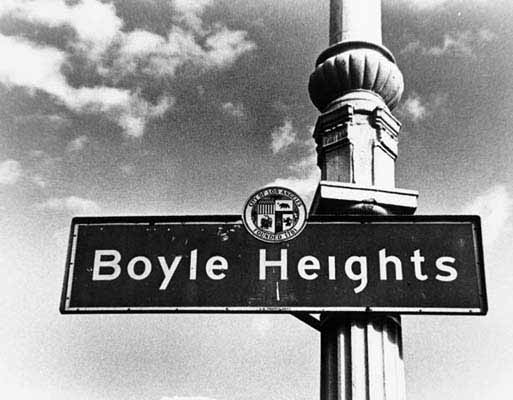And yet, larger forces have always pulled L.A. apart, especially in those places where working people live. In Boyle Heights, a kind of de facto segregation has lately taken root — the community is more than 95% Latino.
[Note: This article was originally posted on December 12th, 2011. The IFNM website was attacked by hackers and many articles are now gone from the archives. As a public service, IFNM is now reposting said articles.]

Bill Phillips’ name doesn’t often show up in histories of L.A.’s Eastside. But he, as much as anyone, helped foster its cultural renaissance.
From a storefront on the old Brooklyn Avenue, he sold guitars, violins and assorted other instruments, giving out free lessons on just about anything that could make music. He stocked a cabinet with saxophone reeds and rented out amplifiers that boomed at many a backyard party and social-hall concert.
Phillips’ customers, in turn, provided the soundtrack to the social and cultural transformations that defined the Eastside in the 1960s, ’70s and beyond. Members of Chicano Rock groups like Los Lobos, Thee Midniters, and Ollin all visited Phillips Music Co. at different stages of their careers.
All this happened in a distinct interval in Eastside history, a few decades in the middle of the 20th century when L.A.’s Jewish history and its Latino history and Japanese American history intersected in Boyle Heights.
“It was this mix of all these kinds of people together.” said Bruce Phillips, Bill’s son, who is now a professor at Hebrew Union College in Los Angeles. “There was this sense that they are the same as we are, they’re nice people and they’re our friends.”
It’s one of the great secrets of our history that L.A. has always been a culturally diverse place where races and creeds mix freely. You can see this in many relics and records from the city’s past: from the roster of names buried in L.A.’s original Catholic cemetery to the 1930s novels of John Fante.
And yet, larger forces have always pulled L.A. apart, especially in those places where working people live. In Boyle Heights, a kind of de facto segregation has lately taken root — the community is more than 95% Latino. When Bruce and others who know its history speak of Boyle Heights, they often use the phrase “the L.A. that might have been.”
[…]















